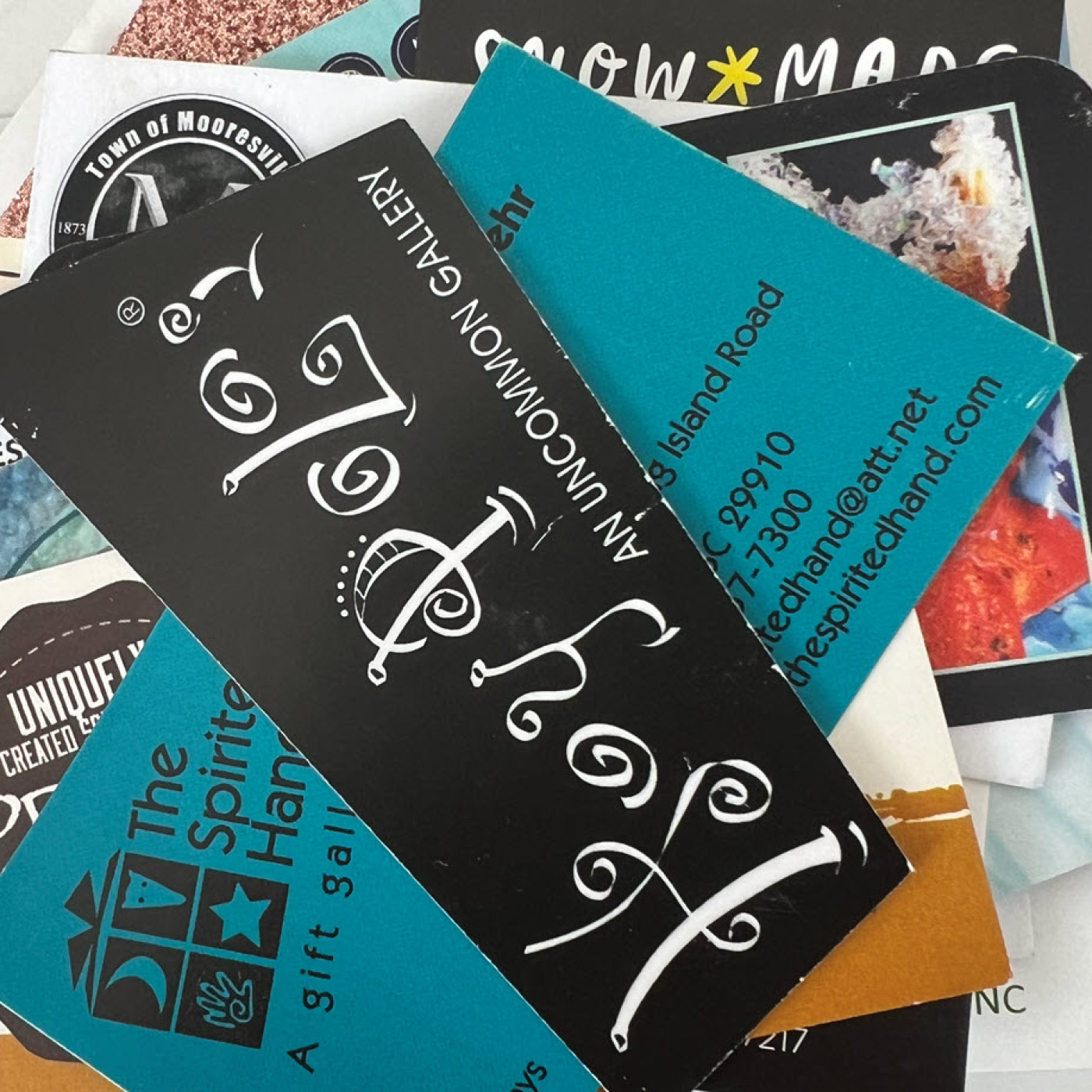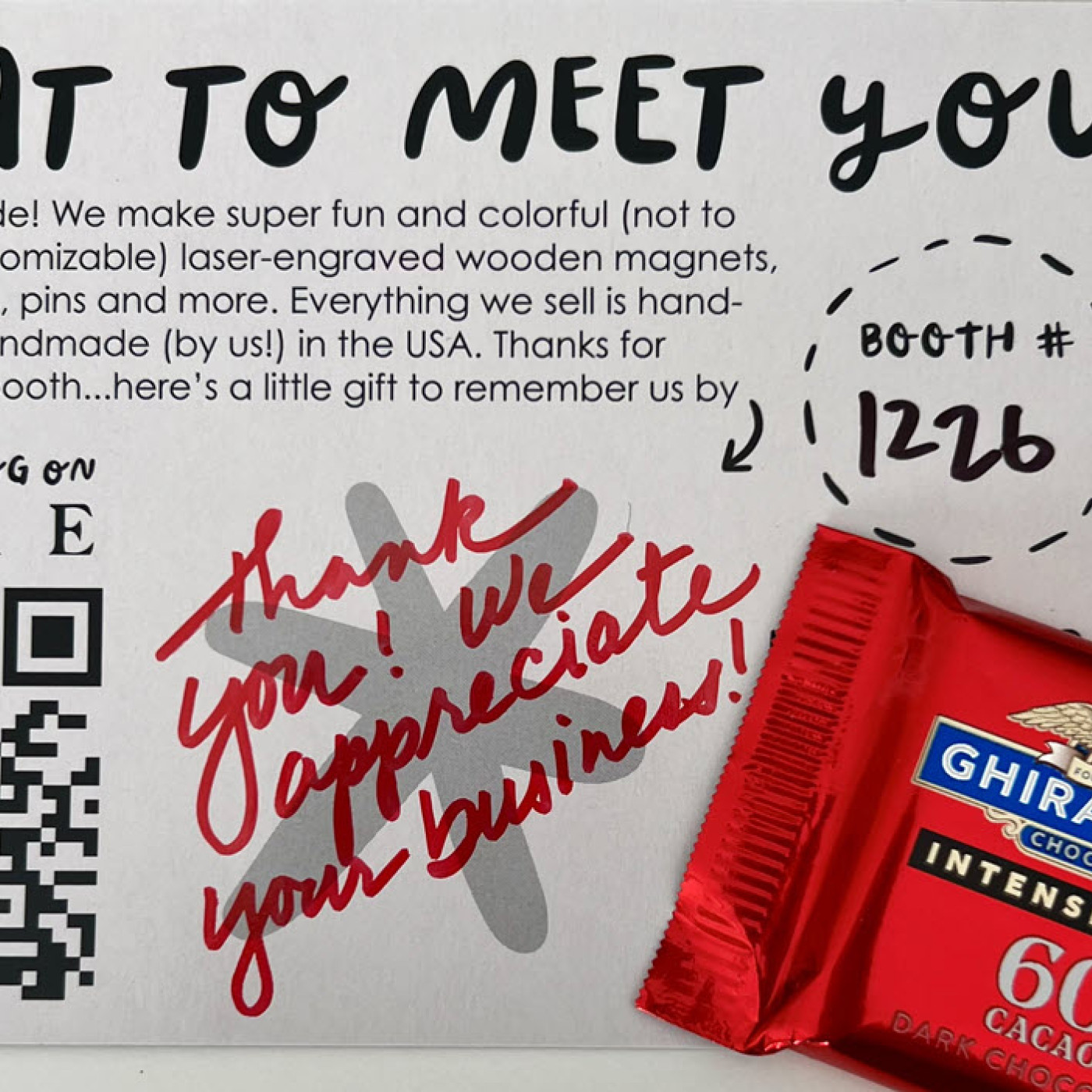The Trade Show is Ending - Now What?

Your trade show is in the books! You are grateful it was successful and itching to get back to the studio to fill all those orders. But even before you leave the show, there are a few things you can do to make your life and business easier and more prosperous.
First, put all your orders together in a safe place. This is especially important if you have written any credit card numbers on the forms. If these fell into the wrong hands, your life could be very unpleasant.
Second, you probably acquired a lot of paper and other items during the show. Find three empty bags and put all the business cards into one bag. Hopefully, you made some notes on the cards during the show, but now is a good time to label them, so you know how you will use them when you are back in the office.
In the second bag, put all the materials you want to review or save, such as good examples of line sheets or even some swag you picked up. The final bag is for the recycling bin, so toss the clutter before you pack.
Speaking of packing, most trade show veterans are diligent about having a strict method of organized packing, so everything is easily unpacked, put away, or stored without a hassle. Discover what method works best for you, but at a minimum separate the display pieces, your inventory, and the office supplies.
Once home, it is important to use the time immediately following a show to lay a firm foundation for future business while the experience is still fresh in your mind. I know several exhibitors who go home and immediately contact their past wholesale customers who did not attend the show.
They told them about their successful show and offered them the show special if they placed an order in the next 10 days. This marketing strategy can produce added income, and it is also a nice way to cement a partnership with existing customers who can save on a reorder. It is a win for everyone!
It is important to pull out all the orders you got at the show and review each one carefully. Are there any special notes or instructions attached? Did some buyer want to make sure there were no orange vases? And did someone else want the shipment divided into two distinct shipping dates? These are small details that can trip you up later, so make them really clear with a big red circle, so it catches your attention when you are filling the order.
This is also a good time to get the ship dates organized chronologically so you can attack the workload systematically. Make a tally of each SKU ordered, so you can maximize your production efficiency. Rather than tackle one order at a time, you obviously would be smarter to produce many of the same items you will use to fill orders in the next several months. As you become more experienced, you will have a good idea of what your bestsellers will be and can have a solid pre-show inventory ready to go.
Now that you have a handle on all the items you need to produce, take a good look at your supply inventory to make sure you have enough materials to cover all your orders. You do not want to be caught empty-handed, especially with items that are not local or might have a supply chain delay.
This is also an excellent time to make sure your shipping center is ready to spring into action. You should have a set system in place, with all your materials organized, a scale for weighing your packages, and a service like Shippo or Pirate Ship to find competitive rates and print your shipping labels.
Do not plan to take your boxes to the post office or a local shipping store like UPS or FedEx and buy postage there, because this is always the most expensive way to ship. Also, be diligent about double-checking your shipping information. Shipping errors are expensive, time-consuming, and frustrating, so make sure this end of your business is good to go.
Speaking of shipping, this is a great opportunity to reinforce your partnership with the store that placed an order with you. If you have a stack of company postcards, plan to put one in with each order with a short, handwritten note thanking them for the order. Have a stack of these ready to add to each order, along with the packing slip that lists each item in the box. We know some companies that add both a note and a small treat for the person who has the unenviable job of unpacking the box.
There is still one more very important post-show task, and that is following up on all your business leads. At the show, you certainly met a lot of folks and hopefully you collected their business cards. If you were at the top of your game, you were also diligent writing a few notes on the card about the person you met. These cards are a goldmine because they contain important leads for future business.
You should especially focus on the folks who came into your booth. Perhaps they chatted with you, but they left without placing an order. You should send them an email as soon as possible; many recommend no later than two days after the show.
Right away mention the show, saying, “It was great meeting you at the XX show last week.” Just the fact they came into your booth is reason to assume they liked your product and thought it might work in their store.

So, refresh their memory with a brief line about your brand and if you had a show special, you might offer it if they place a qualifying order in the next week. You can attach a line sheet to the email and close by telling them you hope you can do business together soon. If you recall any details about your conversation or their particular business, mention it so they know you were really paying attention to them.
Add all these folks to your email list and touch base with them throughout the coming months — particularly if you have a special promotion or are creating new products. Let them know if they can find your work on a wholesale platform, such as Faire or IndieMe, and of course, email them when you are doing another trade show.
Invite them to follow you on social media, and in turn follow them so you can become knowledgeable about their business. Meeting potential business partners is a major reason to do a trade show, so keep in mind that every card has the potential to bring you business, and this follow-up is a prime marketing opportunity. These contacts are so
much more valuable than cold contacts and are one of the prime benefits of doing a trade show, so do not let them fall through the cracks.
Since your trade show experience is still fresh in your mind, take time to review it thoroughly and make some written notes. What was the most difficult aspect of the show for you, and how can you improve it?
Perhaps it was setup, or your booth configuration in general. Were you missing any tools or materials that you needed? Did you see some booth, lighting, or display tricks you would like to incorporate at your next show?
One of the great side benefits of doing a show is how much you learn from fellow craftspeople, so add all these tips to your trade show folder. As you accomplish all these post-show tasks, pat yourself on the back. You are well on your way to becoming a trade show pro!
About the Author
Diane Sulg is executive director of CRAFT and founder and co-chair of American Craft Week (ACW). She is a handmade advocate who provides valuable information in her one-day seminars titled “All About Wholesale” at wholesale shows throughout the United States. Diane is the former owner of Maddi’s Gallery, in Charlotte and Huntersville, North Carolina.
